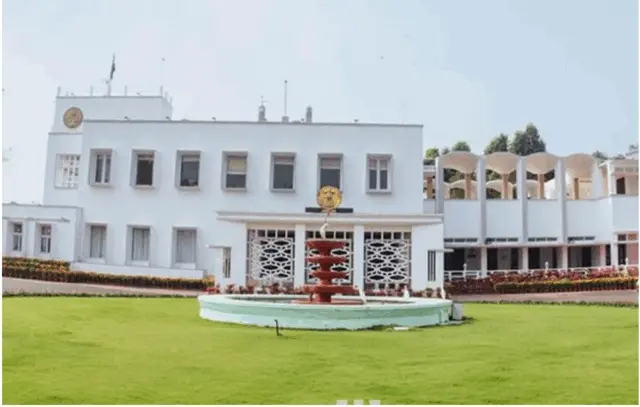Bhubaneswar: Now I days, Cryptocurrency has become a hot topic of discussion. Sometimes it’s the central government who is discussing this and sometimes both the reserve bank and the government are together in the discussion. The Indian government, now, has planned to propose a bill on cryptocurrency in the forthcoming winter session of the Parliament starting from 29th November. The main aim of this bill is to ban private cryptocurrency in the country and bring up laws on this. So the first question that comes to our mind is what is this cryptocurrency and why did it come to India. So let’s understand why and how this currency has come.
It started when in 2008, the economic condition had tormented in western countries, as a result of which many banks got broke. This means the big banks had given lots of loans to the real estate businesses but could not get their money back. So the banks ran out of money. There was a company named ” Lay Man’s Brothers”, whose financial condition was then ruined and put a huge impact on the overall economy across the world. So America, in 2008, was going through an economic depression, to survive from it the American government started to print money arbitrarily. On the other hand, this economic depression of America had also affected both UK and Japan, as a result, they also followed the same path to escape. Simultaneously they also reduced the interest rate. The major aim behind this is to attract the people to take money from the banks and eventually and the bank will not run out of money, people will also spend money and gradually the economic condition will come back to normalcy. When the banks started printing unlimited money the fundamental value of the money began to erode. In other words, it was a strong jolt to the people’s confidence in money. Now, the question arises of how and why printing money can affect the confidence of people. Let’s understand this. A hundred rupees note is just a piece of paper unless it is signed by the Governor of the Reserve Bank and until the government has not declared it invalid. Along with the signature of the Governor, it is written on the hundred rupees notably the Reserve Bank that ” I promise to pay the owner hundred rupees”. One of the many meanings of this writing is that they shall not print so much currency as the value of a hundred rupees note will reduce to 90 rupees. This validated, we have confidence in the hundred rupees note we are holding in our hands that we can buy things worth a hundred rupees by giving this piece of paper.
When the government prints money arbitrarily then they break the trust of the people. As we are dependent on the government and the Reserve Bank for money we seem to have no issues now. But according to the economic calculation, there is has no upper limit of how much. money needs to be printed for India units lifetime. In this situation, there is a formula for how much money should be printed. Therefore the government can print money at any point in time to safeguard itself. The result of this action is well known from the instances of Zimbabwe. The country goes bankrupt and inflation occurs. So it is possible that we would not depend on the government or any bank for the money and on the upper limit for printing money can be created so that the money is not printed arbitrarily. So the story of cryptocurrency has first started from here. In 2009, the first cryptocurrency, “the Bitcoin” had been created on this basis. Satoshi Nakamoto had launched a cryptocurrency called Bitcoin in 2009. This currency was based on cryptography and its basic science is black chain technology. This idea is to solve the problem of printing money. There are, in total, 21 million Bitcoins available and this is the upper limit and it is understood that more than this can not be made. Like, Bitcoins, there are all in all 7557 crypto coins available across the world by November 2021. You must have heard of Ethereum, Trone, Dogecoin etc.
For example, it is like, the Reserve Bank needs around 4,200 rupees for printing ten thousand pieces of 2000 rupees notes, and for printing ten thousand pieces of 500 rupees notes. So is an expensive affair for the Indian government. Another angle is that money can be copied, as a result of this, the economy of the country and inflation will be hugely affected. Not only this, the Reserve Bank keeps a track of the spending of the money after printing the same. That is the reason there is a unique number printed on every note, which is also important. This arrangement is done to keep a track of money laundering. If looking at it from a different perspective, we can’t use the same note twice and purchase two different things. Both government and the income tax authority have all the information on the banking transactions. But if all the transactions are done via cash transactions then it becomes difficult to find out who paid the money to whom and due to which many money laundering and black market transactions will operate. Both the government and the Reserve Bank has to bear this much burden for the use of paper money, and it is very difficult to manage this money as well. money has another basic characteristic that is ‘free transferable’, which means it can be moved from one person to another without any hesitation. But come to think of it, we have to pay the bank some amount to transfer the money, for example, RTGC charge, demand draft charge etc. Even sending money abroad has to be charged for accessing that bank facility. Isn’t it an extra expense for us? Sending money to someone doesn’t happen immediately but takes time. This is also another drawback of the paper money system.
Not think, could there be any such alternative currency system where there would not be any fear of money being stolen? There would be a system to keep track of who gave money to whom, there would be no need to print money, money could be sent to any place in the world without any charges, money could be transferred to anyone world within a fraction of a second and money can’t be duplicated. The planning of Cryptocurrency is the solution to all these problems. This is the core and a unique and direction of the planning of cryptocurrency. By thinking from an economic perspective it seems to be a beautiful alternative, it has a negative side which we will explore later. Maybe you can understand why has this cryptocurrency had come and from which point of view it has been planned. Now let’s put some light in another direction of money along with cryptocurrency.
For example, you have to transfer 10,000 rupees to someone online banking but you have only 8,000 rupees in your account. So when you log in to your online banking account and go on to pay, then it will notify you that you have an insufficient balance. It means, your bank and the Reserve bank has all the information about and how much balance you have in and all the transaction details of your account. It has another meaning that all the transactions made through the bank, are checked and verified by the Reserve Bank. If you have given money to someone is verified by their banks and whether he has received the money is verified by your bank and the complete details of these transactions are kept written on the ledger book. If you look at it differently, only three stakeholders have the details of who gives money to whom and who receives money from whom is known, those three stakeholders are your bank, their bank and the Reserve Bank. So one centralised system that creates, manages and verifies the money, isn’t it? By thinking it minutely, we will know that one person gives and another receives the amount is considered as money. Another way is the mode of knowing whether I have paid the price of a thing purchased from a person is known as money, otherwise, it is just a piece of paper. So to measure this system the approved bunch of papers in our hand is called money.
As per the creators of cryptocurrency that there is a mediator between the payer and the payee, that is the bank. But if both parties (the payer and the payee) verify their transactions themselves by using technological codes and it is made a public system, then there would be no need for the bank. It means, now an instead of the name and account number an electronic ledger would be made in which code is paying to whom will be seen and verified publicly. In this way, there would be no need for the bank. This is the basic definition of money. So this planning seems an alternative of the money, but there is a long way to go also many problems would arise.
Now it must have been clear that how and on what basis cryptocurrency has come. Simplistically, by inserting technology in the air something which looks like a currency or has a picture of a currency is created, and this system is considered as an alternative in the coming times. Only time will speak what is there in the store.
-OdishaAge




